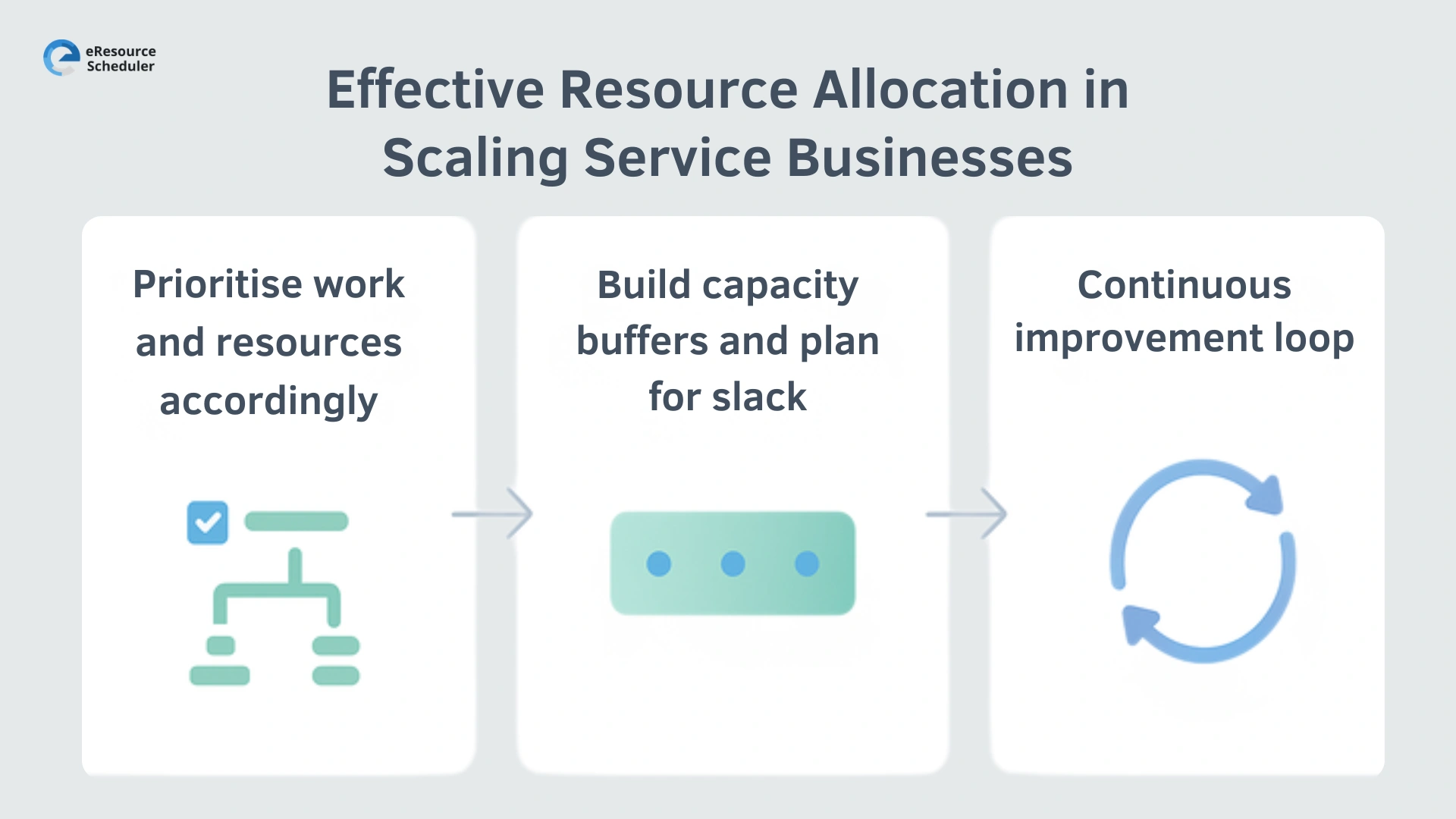
Scaling a service business is a balancing act. As clients grow and projects multiply, chaos can creep in, deadlines slip, teams burn out, and profit margins tighten. The truth is, growth isn’t just about selling more; it’s about managing better. That’s why mastering resource management for a service business is the real game-changer.
When teams, tools, and timelines align through a strong resource management system, the business scales sustainably without the usual operational mess.
Service-based businesses thrive on efficiency. Unlike product companies, your main asset is people, and their time, skill, and availability determine every outcome. Poor visibility into who’s doing what (and when) leads to missed opportunities, uneven workloads, and frustrated teams.
When resource management is handled smartly, you get:
In essence, resource management isn’t a side process. It’s the foundation that keeps service operations scalable and sustainable.
Before pouring energy into marketing or automation tools, fix the resource layer first. Effective resource planning for service business growth ensures every team member’s time is used neither underbooked nor overloaded, but optimally.
Without this kind of structure, growth often looks like chaos disguised as progress.
Before you pick tools or build processes, you need the fundamentals:
In a service business, you are juggling people, not widgets. A delay by one person can knock out the chain, hurt client trust, and reduce profit margin. Resource scheduling tools for agencies make that visible. They help you to:
Agencies live and die by deadlines. Juggling multiple clients, deliverables, and creatives can spiral fast without the right digital backbone. Resource scheduling tools for agencies help simplify that puzzle.
Look for tools that allow you to:
Platforms like eResource Scheduler bring this visibility to life. They help agencies move beyond spreadsheets to dynamic dashboards where one glance reveals everything that needs adjusting.
Growth often magnifies inefficiencies. When new clients flood in, managing workloads becomes trickier. Managing team capacity during scaling means building systems that flex without breaking.
Here’s what helps:
A well-managed capacity plan is the only difference between a team that grows stronger with every new client and one that burns out by Q3.
Every hour counts in a service business. The smoother the handoffs, the faster the delivery, and the happier the clients. Optimizing resource workflow efficiency is about removing friction from daily operations.
A few proven tactics:
Integrated platforms like timesheet management software paired with smart scheduling tools can transform how your team operates. They don’t just track hours; they reveal patterns, gaps, and opportunities for continuous improvement.

When growth hits, the “all work is equal” mindset kills you. Instead:
In scaling, you’ll have pipeline bursts and dips. Building in slack time prevents burnout and maintains delivery quality.
Effective resource allocation isn’t “set and forget”. You need frequent reviews:
Then iterate, process, and update rules in your resource management system and make your team smarter over time.
Manual systems might work when you’re a small team. But as soon as projects multiply, human error and delays creep in. That’s where resource planning software comes in, so managers can focus on strategy, not spreadsheets.
With tools like eResource Scheduler, businesses get:
It’s quiet efficiency, the kind that scales without shouting for attention.
Every thriving service business has one thing in common: control over its resources. Mastering resource management for a service business isn’t about micromanagement; it’s about precision. When teams know what’s expected, leaders know what’s possible, and clients know what’s coming.
Start by upgrading how your business plans, allocates, and schedules resources.
Explore how eResource Scheduler simplifies the process, from forecasting to time tracking. Book a demo and see how your operations can scale smarter, not harder.
1. What is resource management for a service business?
It’s the process of planning, allocating, and tracking how people, tools, and time are used across projects to ensure efficient delivery and profitability.
2. How does resource planning support service business growth?
Strong planning ensures teams are neither overworked nor underused, leading to faster delivery, better morale, and consistent client satisfaction.
3. What tools help manage resources effectively in agencies?
Modern resource scheduling tools for agencies like eResource Scheduler offer visual dashboards, drag-and-drop scheduling, and real-time workload tracking.
4. How can I manage team capacity while scaling up?
Track utilization rates, standardize processes, and use a resource management system that adapts as new clients and projects are added.
5. Why is workflow efficiency vital for service-based businesses?
Efficient workflows reduce delays, improve communication, and free up billable hours, directly impacting profitability and client retention.
Plan Smarter. Schedule Faster.
Join thousands already using eResource Scheduler to align teams, time, and tasks seamlessly.